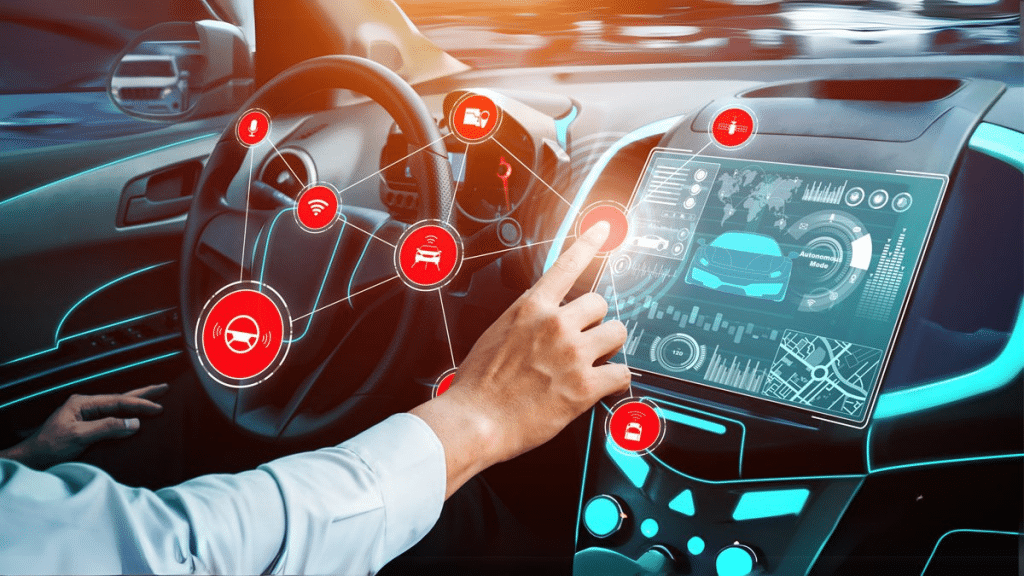Technology has transformed how we live, work, and drive. Today’s tech makes driving safer and builds good habits. Tools like in-car systems and apps can boost both skill and confidence.
New and experienced drivers both benefit from these advancements. ADAS features, like lane-keeping and blind-spot alerts, keep drivers focused and aware. Simulators let drivers practice in complex scenarios with no real risk. Smartphone apps track driving habits like braking, speed, and distance. With modern tech, drivers can become safer and more prepared than ever.
Here’s a closer look at how technology can improve driving skills.
Advanced Driver Assistance Systems (ADAS) for Safe Habits
Advanced Driver Assistance Systems, or ADAS, are valuable tools that boost both safety and skill. ADAS features include adaptive cruise control, lane-keeping assistance, automatic braking, and blind-spot detection. These tools not only prevent accidents but also reinforce good driving habits:
- Adaptive Cruise Control: This system helps drivers maintain a safe following distance, reminding them of the importance of space between vehicles.
- Lane-Keeping Assist: It alerts drivers if they drift out of their lane, encouraging better control and focus.
- Blind-Spot Monitoring: This system alerts drivers to vehicles in their blind spots, reinforcing thorough checks before changing lanes.
These tools don’t replace skill, but they do encourage safer habits and better focus. Over time, these reminders help drivers become more attentive.
Driving Simulators for Skill Practice
Driving simulators offer a controlled, safe space to practice driving. They mimic real-world challenges, from poor weather to road obstacles. Simulators are valuable for new drivers, as they can gain experience without real-world risk:
- Realistic Situations: Simulators can simulate rain, fog, icy roads, or night driving, helping drivers practice these conditions safely.
- Mistake-Friendly Learning: In a simulator, drivers can make mistakes without real-life consequences, which encourages effective learning.
- Practice for Specific Scenarios: Simulators allow drivers to practice skills like parallel parking and tight-space maneuvering, all without damaging a real vehicle.
Besides simulators, drivers can also get a knowledge refresher through valuable resources such as drivingtestcanada.ca. From free manuals to practice tests, you can access it all to become a more responsible driver.
Mobile Apps for Knowledge and Monitoring
Smartphone apps make learning easier and give valuable feedback on driving habits. Many apps focus on teaching road rules, monitoring behavior, and helping drivers improve. Here are some common types:
- Driver Education Apps: Apps like “DMV Genie” offer interactive lessons for new drivers. These apps improve knowledge of road rules and signs.
- Driving Behavior Monitoring Apps: Apps such as “DriveSmart” track driving habits like speeding and sharp braking. These apps offer scores and feedback to help drivers improve.
- Navigation Apps with Safety Alerts: Apps like Google Maps and Waze include hazard alerts, such as road debris or weather issues, that help drivers stay aware and adapt quickly.
With these apps, drivers can monitor their habits and see areas for improvement. They also provide a convenient way to practice road rules and improve habits over time.
In-Vehicle Cameras for Reviewing Performance
In-car cameras, often called dashcams, capture real-time footage of drives. Drivers can review this footage later to spot mistakes and areas for improvement. Post-drive review has become popular because it allows drivers to learn from past errors:
- Detailed Mistake Analysis: Watching footage can help drivers understand where they went wrong.
- Promotes Mindfulness: Knowing that driving is recorded can make drivers more careful and focused.
- Visual Feedback for Improvement: Reviewing footage helps drivers retain lessons and avoid repeating mistakes.
With video footage, drivers can become more aware of their habits, making it easier to identify and improve weak areas.
Virtual Reality (VR) Training for Situational Awareness
Virtual reality is changing driver training by providing a fully immersive experience. In VR, drivers can practice complex driving scenarios and improve situational awareness. They can rehearse high-risk situations in a low-risk environment, which builds confidence and reaction skills:
- Collision Avoidance Training: VR can simulate potential collision situations, which sharpens reflexes.
- Awareness of Surroundings: VR helps drivers practice observing their surroundings and responding quickly.
- Response to Aggressive Driving: Some VR simulations include road rage scenarios, teaching drivers how to stay calm and react safely.
VR training is especially helpful for drivers wanting to learn defensive driving skills and easily handle high-pressure situations.
Conclusion
Modern technology has reshaped driving education and skills. From in-car systems to mobile apps and VR training, technology offers many ways to become a better, safer driver. By integrating these tools into regular driving, both new and experienced drivers can get real-time feedback, build skills, and practice safe driving habits.
Embracing these tech tools means joining a new era of safer, smarter driving. Whether you’re just starting or have years of experience, these tech solutions can help you refine your skills and drive more responsibly.
